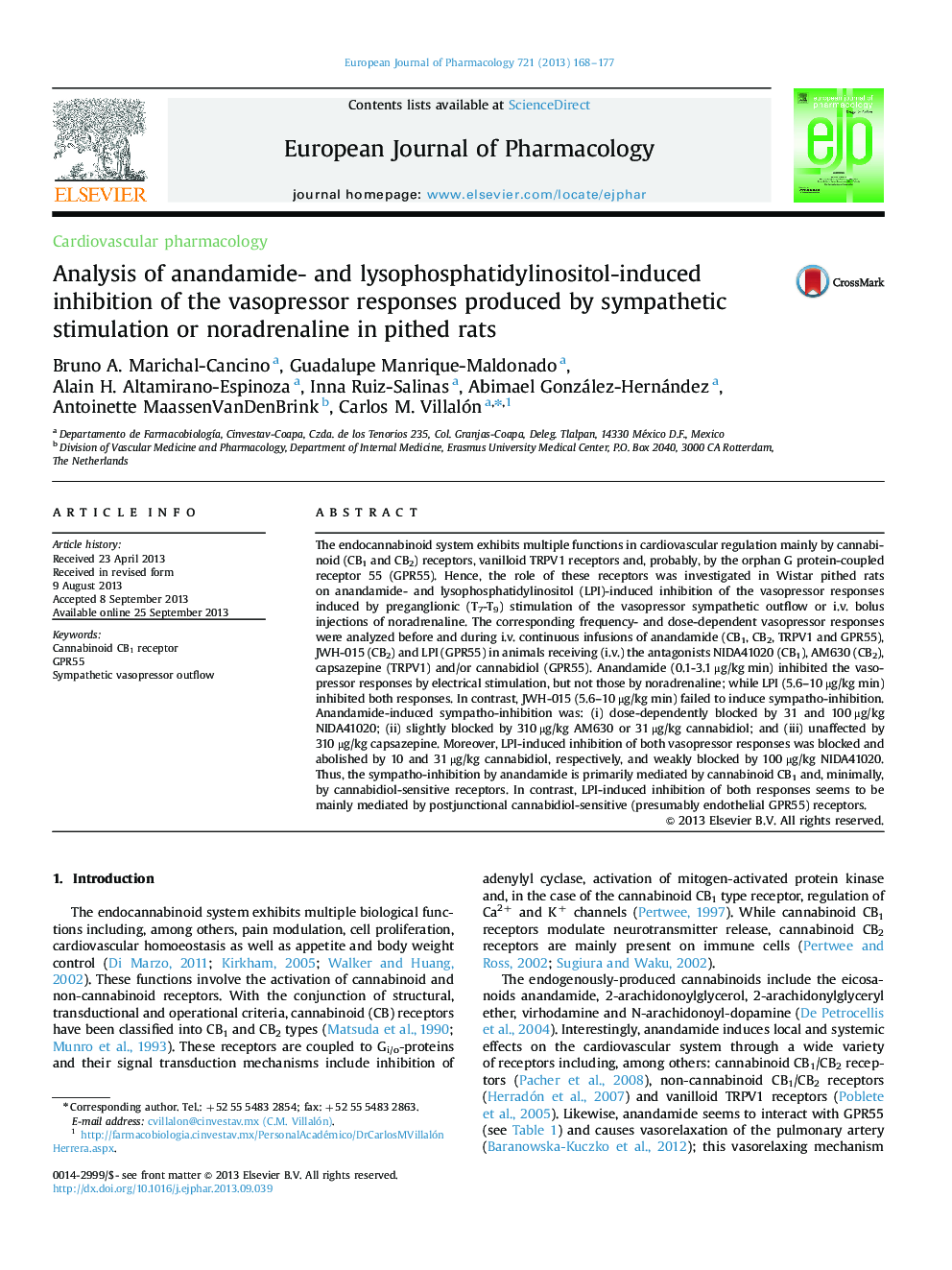| Article ID | Journal | Published Year | Pages | File Type |
|---|---|---|---|---|
| 5828176 | European Journal of Pharmacology | 2013 | 10 Pages |
The endocannabinoid system exhibits multiple functions in cardiovascular regulation mainly by cannabinoid (CB1 and CB2) receptors, vanilloid TRPV1 receptors and, probably, by the orphan G protein-coupled receptor 55 (GPR55). Hence, the role of these receptors was investigated in Wistar pithed rats on anandamide- and lysophosphatidylinositol (LPI)-induced inhibition of the vasopressor responses induced by preganglionic (T7-T9) stimulation of the vasopressor sympathetic outflow or i.v. bolus injections of noradrenaline. The corresponding frequency- and dose-dependent vasopressor responses were analyzed before and during i.v. continuous infusions of anandamide (CB1, CB2, TRPV1 and GPR55), JWH-015 (CB2) and LPI (GPR55) in animals receiving (i.v.) the antagonists NIDA41020 (CB1), AM630 (CB2), capsazepine (TRPV1) and/or cannabidiol (GPR55). Anandamide (0.1-3.1 μg/kg min) inhibited the vasopressor responses by electrical stimulation, but not those by noradrenaline; while LPI (5.6-10 μg/kg min) inhibited both responses. In contrast, JWH-015 (5.6-10 μg/kg min) failed to induce sympatho-inhibition. Anandamide-induced sympatho-inhibition was: (i) dose-dependently blocked by 31 and 100 μg/kg NIDA41020; (ii) slightly blocked by 310 μg/kg AM630 or 31 μg/kg cannabidiol; and (iii) unaffected by 310 μg/kg capsazepine. Moreover, LPI-induced inhibition of both vasopressor responses was blocked and abolished by 10 and 31 μg/kg cannabidiol, respectively, and weakly blocked by 100 μg/kg NIDA41020. Thus, the sympatho-inhibition by anandamide is primarily mediated by cannabinoid CB1 and, minimally, by cannabidiol-sensitive receptors. In contrast, LPI-induced inhibition of both responses seems to be mainly mediated by postjunctional cannabidiol-sensitive (presumably endothelial GPR55) receptors.
